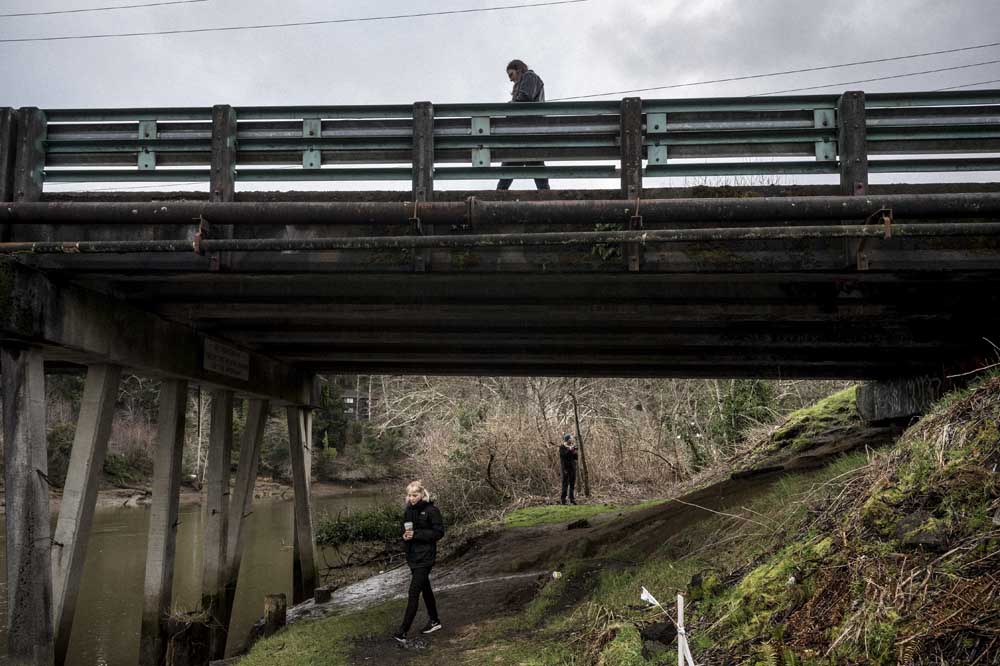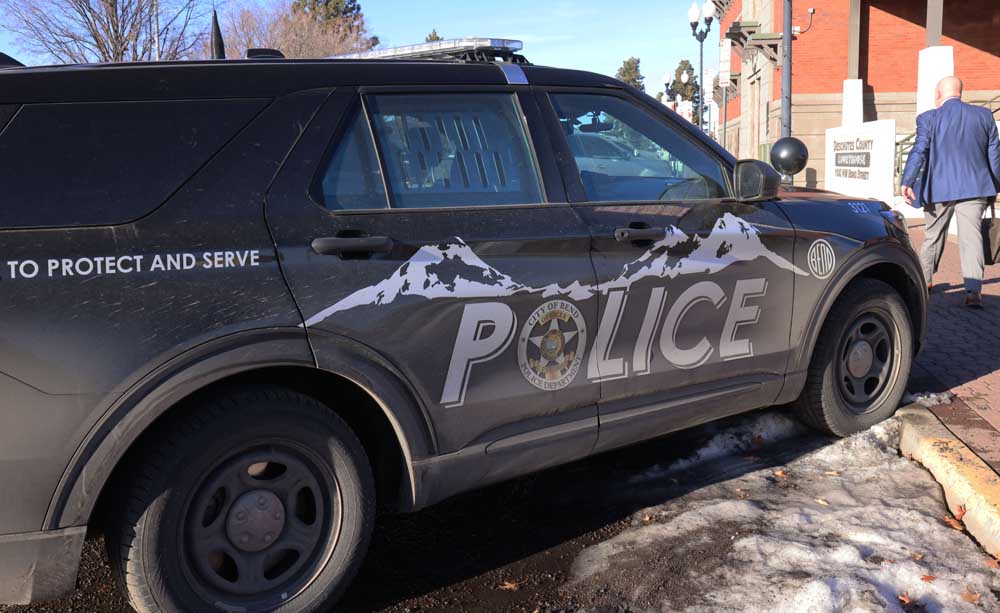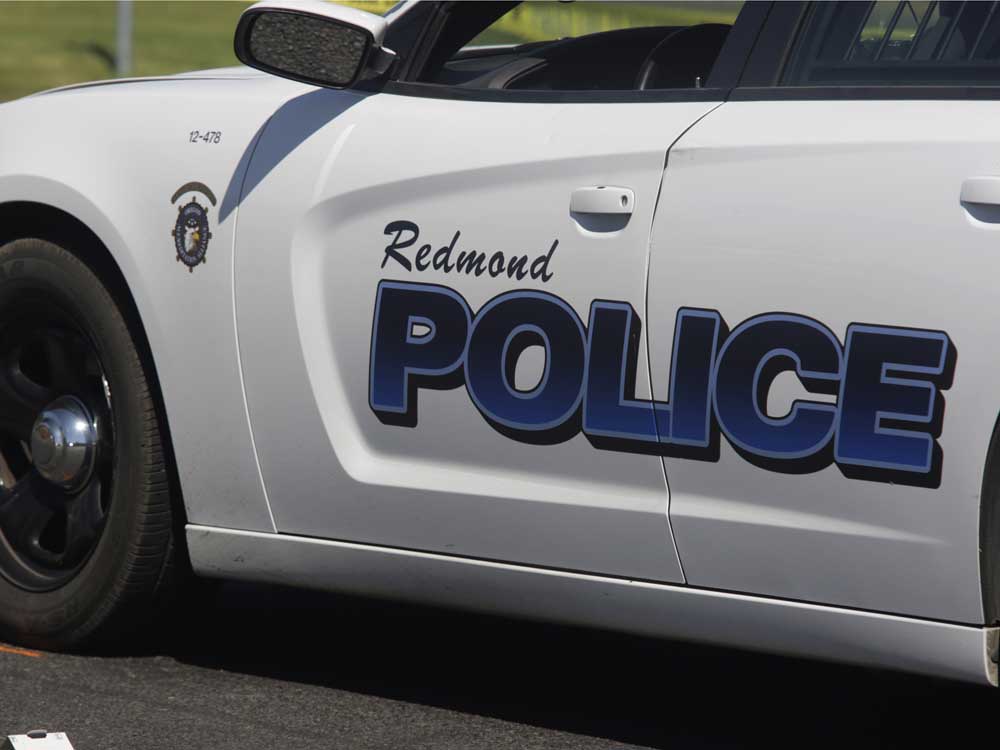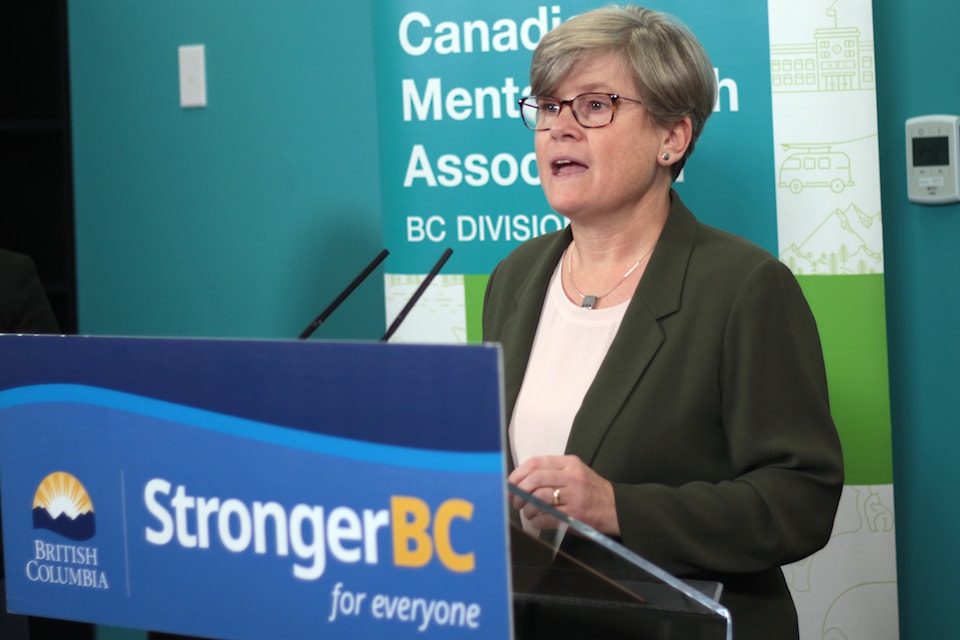Come as you are: remembering Kurt Cobain
Published 12:00 am Sunday, March 30, 2014

- Photos by Stuart Isett / New York Times News ServiceThe Young Street Bridge is next to the Kurt Cobain Riverfront Park in Aberdeen, Wash., the grunge icon’s hometown. Cobain claimed he frequently slept under the bridge before his rise to fame.
Kurt Cobain felt bored and old. Teenage angst had paid off well, as the line in the Nirvana song “Serve the Servants” put it, but the fame that came with being the frontman of the seminal grunge band that brought punk to the mainstream was taking a toll. Cobain was considered by many to be the voice of his generation, but he was also battling depression and addiction, diseases that led to his suicide at 27.
I was a 21-year-old college student at the time, and one my fellow DJs at our college radio station, WXVU, at Villanova University, relayed the grim news. We took to the airwaves, playing our favorite Nirvana songs and mourning the loss with pony kegs of the best beer we could afford.
In the 20 years since Cobain died, Nirvana’s music has stayed with me.
When I read that Cobain’s hometown, Aberdeen, Wash., was planning a day to honor him in February in advance of the 20-year-anniversary of his death on April 5, 1994, and that Nirvana was being inducted into the Rock and Roll Hall of Fame in April, the reality that one of my favorite musicians had been dead for two decades was unsettling. I had wanted to make a trip to Washington state to see where he came from and what influenced him.
Because there are no organized Nirvana tours, I created my own, using “Heavier Than Heaven,” Charles Cross’ masterful Cobain biography, to create an itinerary that I hoped would give me a better understanding of Cobain and his music.
I started my Cobain trip at the Marco Polo, a no-frills motel on the gritty periphery of Seattle that Cobain frequented in his final days, when his heroin addiction controlled his life. According to the 2007 BBC documentary “The Last 48 Hours of Kurt Cobain,” Cobain used to duck out of his mansion in the exclusive Denny-Blaine neighborhood to meet one of his preferred heroin dealers along Aurora Avenue. He would then retreat to Room 226 of the Marco Polo to shoot up.
The reception area was closed when I arrived late on a Monday night in February, so I rang the doorbell. Moments later, a small sliding window opened, and a man named Jonathan popped his head out. He sized me up wordlessly, slid the window shut, and re-emerged moments later in the reception area, wearing an undershirt, a pair of boxer shorts and woolly socks.
“This place was the Wild West back when Kurt stayed here,” he said, checking me into Cobain’s favorite room. “We had hookers throwing TVs out the windows here, drug dealers, junkies, you name it.”
The hometowns
Cobain is often linked to Seattle, but he spent less than two years living in the city. He lived in more than a half-dozen homes and slept in countless other places in Aberdeen and the neighboring towns of Montesano and Hoquiam, and wrote many of Nirvana’s best-known songs in Olympia before moving to Seattle in 1992. I started my Cobain homes tour in Montesano, a small town where members of the influential punk band the Melvins grew up.
Standing outside 413 Fleet St. South, the home that Cobain lived in with his father from late 1978 to March 1982, was a neighbor named John Bell, who told me that when Cobain’s mom used to visit him, he could hear them yelling at each other from across the street. Fleet Street was a step up for Cobain, but Bell said that the modest, century-old house with red vinyl siding and newspapers covering the windows seemed mostly empty.
A few minutes outside Montesano, I drove into the Country Estates mobile home park, where Cobain lived with his paternal grandfather, Leland Cobain, after leaving Fleet Street. While parked next to a speed limit sign that warned, “Violators will be Prosecuted, Survivors will be Shot,” a man named Jerry who was out for a walk offered to introduce me to Gary Cobain, Leland’s son and Kurt’s uncle.
“My dad greeted Nirvana fans from all over the world here,” said Gary Cobain, who moved into the mobile home after his father died last May. “It kept him busy.”
Shadowing the Chehalis River, I drove west from Seattle along Olympic Highway to Aberdeen, an old logging city once called “the roughest town west of the Mississippi.” Before a tableau of billowing smokestacks there is a sign, erected by the Kurt Cobain Memorial Foundation in 2005, that reads: “Welcome to Aberdeen, Come As You Are,” a reference to one of Nirvana’s hit singles and now the unofficial motto of the city.
The mayor of Aberdeen, Bill Simpson, had offered to take me on a mini-Nirvana tour.
“Kurt went to Seattle and became famous, but he was from Aberdeen,” the mayor told me as we piled into his Chrysler minivan. “Seattle embraced him as one of their own, but then he killed himself, and suddenly he became an Aberdeen guy again. We’re happy to reclaim him.”
We drove by 1210 East First St. to have a look at the home where Cobain lived for several years as a child in the city’s notorious “Felony Flats” neighborhood, which is rife with boarded-up homes. His mother, Wendy O’Connor, who now lives in California, placed the four-bedroom modest home, assessed at $67,000, up for sale in September at $500,000.
A real estate agent gave me a tour of the home, which is being marketed as a “once in a lifetime opportunity to own a piece of rock history.” It was like a stroll into a 1970s time warp. The vintage kitchen featured orange, black and gold carpeting, the hallway had wood shingles, and Cobain’s bedroom was just as he left it: with a hole punched in the wall and plenty of graffiti paying homage to bands he liked (Led Zeppelin, Iron Maiden) and perhaps his favorite beer, Olde English 800.
Aberdeen’s must-see Cobain site is a small park, opened in 2011 by the Kurt Cobain Memorial Foundation, called Kurt Cobain Landing, which sits at the foot of the Young Street Bridge, the inspiration for the song “Something in the Way.” Cobain claimed that he lived under the bridge for a time, and while most who knew him don’t think he did, it was clearly one of his preferred hangouts. Set along the banks of the murky Wishkah River, the strangely appealing little park features a guitar sculpture, a likeness of Cobain with the lyrics to “Something in the Way,” a headstone with some amusing Cobain quotes (sample: “I’m a walking bacterial infection”), a Kurt Cobain “air guitar” sculpture and a collage of Nirvana-related graffiti under the bridge itself.
Chasing a shadow
Two months after playing their first gig, at a house party in Raymond, Cobain left Aberdeen and moved to Olympia, a comparatively bohemian oasis where he found his creative muse. My first stop was 114 Pear St., a small house in central Olympia split into three apartments where Cobain lived with Tracy Marander, his girlfriend at the time. She supported him while he wrote many of the songs that would appear on “Nevermind.” They broke up, but he kept their tiny apartment until July 1991.
Scott Taylor, the lead singer and guitar player for the Hard Way, lives in apartment No. 3, where Cobain wrote Nirvana’s most recognizable songs, and he offered me a tour. Inside the compact one-bedroom apartment, Taylor has a Nirvana poster featuring a photo of Cobain posing in what is now Taylor’s backyard, and another photo of the band playing an early gig. The fact that a musician is bathing in the same black claw-foot tub Cobain used to pass out in isn’t a huge coincidence: For a small city, Olympia’s music scene is as vibrant as they come.
On my way back up to Seattle, Nirvana tunes rattling my rented Corolla, I felt that trying to follow in Cobain’s footsteps was a lot like chasing a shadow. That was nowhere more so than in Seattle itself, which has changed almost beyond recognition since he died.
Walking around the Denny-Blaine neighborhood, the last place where Cobain lived, I felt that Aberdeen’s most famous son never really fit in with Seattle anyway, certainly not in this exclusive area. I sat on the unofficial Cobain bench and thought about how the Cobain haunts in Seattle, Olympia and Aberdeen mirrored the big picture of what’s happened to these places. Olympia is artier than it used to be, with struggling musicians everywhere, even in Cobain’s old apartment. The dilapidated Cobain childhood homes in Aberdeen spoke to the depressing reality that many young people there are still trying to escape. The fact that most of the grungy places where Nirvana played in Seattle are either gone or completely different is a testament to the continued gentrification of the city.
As these thoughts swirled in my head, the words to a song I had heard during an open mike at Tugboat Annie’s in Olympia the night before popped into my head.
A diminutive, bearded rapper named MC Swamptiger played “Peace,” a song whose final lines, sung — no, screamed — with conviction made me think of Cobain: “IN MY DEATH, I FINALLY FOUND MY PEACE! IN MY DEATH, I FINALLY FOUND MY PEACE. I SAID, IN MY DEATH, I FINALLY FOUND MY PEACE!”






